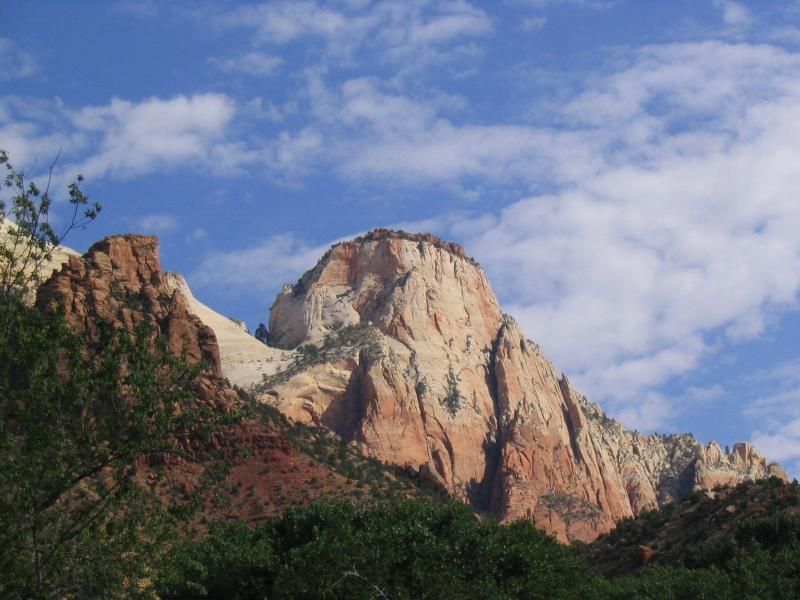
The jaw-dropping canyon in Zion National Park was transformed in a flash 4,800 years ago, when the entire face of a mountain collapsed, new research suggests.
The gorgeous Utah canyon is famous for its sheer cliff walls and wide, flat valley bottom. New geological evidence reveals that the picturesque valley floor formed from an enormous avalanche that dammed the nearby Virgin River. The landslide also created a massive lake that remained for 700 years, according to a new study published in the June issue of journal GSA Today.
"The ancient Zion landslide would cover New York City's Central Park with 275 feet [83 meters] of debris," study senior author Jeff Moore, a geophysicist at the University of Utah, said in a statement. "And you would need 90 times the volume of concrete in Hoover Dam to re-create the mountainside that failed." [Photos: IMAX Showcases National Parks' Stunning Beauty]
Ancient landslide
Researchers had long known that a landslide helped shape the canyon floor in Zion National Park, but exactly when it occurred and how big it was had been matters of debate.
To get a better picture, Moore and his colleagues analyzed the different rock layers along the canyon carved by the Virgin River, as well as the topography in the region. The researchers then looked at sediments formed by the ancient landslide and tried to match them with exposed rock in the canyon to re-create the ancient topography prior to the landslide.
The team also used beryllium isotopes to date the sediments from the landslide. (Isotopes are atoms of an element with different numbers of neutrons.) The researchers concluded that the landslide occurred about 4,800 years ago.
The team also used computer simulations to re-create the dramatic event. The researchers found that a 2,952-foot-high (900 m) chunk of rock fell from the Sentinel rock formation, which stands 7,157 feet (2,180 m) high and overlooks Zion Canyon. The massive rockfall lasted just about a minute, with rocky debris reaching peak speeds of 180 to 200 mph (290 to 322 km/h).
Sign up for the Live Science daily newsletter now
Get the world’s most fascinating discoveries delivered straight to your inbox.
Formed in a flash
The Grand Canyon, the Rocky Mountains, the caldera in Yellowstone Park: Many of the world's most unique and striking geological features were carved by the movement of earth, wind, water and fire millions of years before humans set foot in the structures.
In this way, this cataclysm in Zion Canyon is remarkable: The dramatic reshaping of the landscape occurred during recorded history. Around the same time in the Middle East, the ancient Sumerians were erecting some of the first ziggurats, or massive step pyramids. Archaic Native Americans inhabited the forbidding terrain around Zion Canyon as far back as 10,000 years ago, according to the National Park Service. In theory, then, it's possible that some people actually witnessed the terrifying event.
A similar landslide could spell disaster if it occurred today, the researchers said.
"This catastrophic landslide of massive proportions had two effects," Moore said. "One was constructive, creating paradise through cataclysm. More than 3.6 million people last year enjoyed the flat and tranquil valley floor of Zion Canyon, which owes its existence to this landslide. The other aspect is the extreme hazard that a similar event would pose if it happened today."
Original article on Live Science.

Tia is the managing editor and was previously a senior writer for Live Science. Her work has appeared in Scientific American, Wired.com and other outlets. She holds a master's degree in bioengineering from the University of Washington, a graduate certificate in science writing from UC Santa Cruz and a bachelor's degree in mechanical engineering from the University of Texas at Austin. Tia was part of a team at the Milwaukee Journal Sentinel that published the Empty Cradles series on preterm births, which won multiple awards, including the 2012 Casey Medal for Meritorious Journalism.











